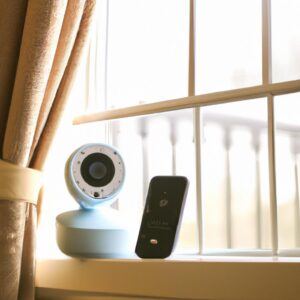Introduction to Home Safety
Home safety is an important concept that can help protect your family, your property, and your peace of mind. It is important for homeowners to take steps to keep their homes and possessions safe from burglary and accidents. This guide will provide information on specific home safety tips as well as advice for choosing the right security systems and equipment.
Implementing an effective home safety system requires careful consideration and planning. Different environments and situations require different approaches. This guide will cover topics such as selecting doors and windows, installing motion sensors, managing outdoor lighting, preventing home fire hazards, and more. Taking time to properly secure your home is a key part of being a responsible homeowner.
Educate on Security Systems
Having the right security system in place is one of the best ways to protect your home, family and property. But with so many options available, it can be hard to know which system is right for you. Here are some tips on understanding different security systems and choosing the one that best fits your needs.
The most commonly used home security system consists of a control panel, door and window sensors, motion detectors, and CCTV cameras. The control panel is the brains of the system, responsible for monitoring all the components and activating the alarm in case of an emergency. Door and window sensors detect when a door or window is opened, while motion sensors detect any movement within the home’s interior. Surveillance cameras provide an extra layer of protection by recording footage of activity both inside and outside the house.
Security systems vary greatly in terms of features, pricing, and level of monitoring. Before making a decision, be sure to research and compare the different brands and systems available. Consider factors like monthly costs, installation fees, warranty period, features offered, and customer support. Also consider whether you want basic monitoring or professional monitoring, as this will affect the monthly costs.
Once you have chosen the right security system for your home, it’s important to make sure that it is properly installed and regularly maintained. Be sure to test all the sensors and cameras and check the batteries regularly. Taking these steps will help ensure the security of your home and peace of mind for your family.
Tips on Doors and Windows
When it comes to keeping your home secure and safe from intruders, one of the most important considerations is the doors and windows. Taking the time to pick the right doors and windows for your home can be beneficial in a number of ways.
First of all, make sure you choose a door with a strong material such as steel or reinforced wood. These materials are much harder to break than regular wood and provide an additional layer of security. Additionally, ensure that the hinges on the door are set deep within the frame so they cannot be easily removed. The same goes for the locks; make sure they are high-quality and installed correctly.
When it comes to windows, you want to make sure that they are made out of impact resistant glass. This type of glass is much more difficult to break and can help deter potential burglars. It’s also a good idea to install locks on the windows, such as key-operated locks that require a key to open them. Finally, if you have ground floor windows, consider installing security bars as an additional layer of protection.
Advice on Door Locks
When it comes to home security, door locks are a key part of keeping your loved ones and property safe. There are a variety of types of door locks available, each offering different levels of security. To ensure that you and your family are sufficiently protected, consider the following advice when selecting door locks.
- Deadbolts – Deadbolts are one of the strongest and most secure types of door locks. They have a steel bolt that, when locked, slides into a metal plate in the door frame.
- Knob & Lever Locks – Knob and lever locks are installed on the interior side of the door and are typically less secure than deadbolts. However, they can still provide an adequate level of protection in certain scenarios.
- Keyless Locks – Keyless locks offer convenience as there is no need for keys – they are opened with a combination or biometric scanning. They are also more difficult to pick than other types of locks.
When selecting door locks, consider the level of security they provide, their ease of use and how long they will last. Do your research and make sure that you are selecting the best lock for your protection needs.
Guidelines for Outside Lighting
Outdoor lighting can be a great way to create an extra layer of protection when it comes to home security. Lighting can make it difficult for criminals to hide in darkness, and may also help deter any potential intruders. Here are some tips to help you optimize your outdoor lighting:
- Position lights near doorways, walkways, driveways, and other areas of access.
- Install motion-sensor lights, which will activate with movement and can scare off potential burglars.
- Ensure that each light provides sufficient coverage for its given area.
- If possible, add dimmers so you can adjust the brightness and the level of lighting depending on the time of day.
- Think about using smart lights which offer additional features like timer settings and dimmers.
- Make sure external light fixtures are securely fastened and in good condition.
- Consider using eco-friendly lighting sources.
By following these tips for optimizing your outdoor lighting, you can create an additional layer of protection for your home.
Steps to Install Motion Sensors
Motion sensors offer an extra layer of security for your property. When installing motion sensors, there are several key pieces of information you need to consider. The angle of detection, range of detection and whether the sensor needs to detect a human or object should all be taken into account.
Start by identifying the area you wish to protect and try to envision how movement will occur in that space. For example, if you’re trying to detect movement in a hallway, the motion sensor could be placed on the ceiling looking down the length of the hallway. This allows it to capture any motion that might occur.
Next, decide which type of motion sensor is best for your situation. There are two main types of motion sensors; passive infrared (PIR) and microwave. PIR use infrared light to detect change in temperature, while microwaves detect waves from moving objects like people or animals.
Now determine the angle and range of detection you require for the sensor. The angle will depend upon the size of the area you are trying to protect and the range can be adjusted depending on the sensitivity of the sensor. For most situations, a range of up to 20 feet should be sufficient.
Finally, determine whether the motion sensor is detecting humans or objects. This will help you to adjust the sensitivity level of the sensor to reduce false alarms. If the sensor is detecting humans, you will need to set the sensitivity level higher than if it is detecting objects.
By considering the tips mentioned above, you can ensure your motion sensor is installed correctly and provides the level of protection required.
Coverage with CCTV Cameras
CCTV (closed-circuit television) cameras are a great way to monitor and protect your property from intruders. These cameras can be an added layer of safety for your home and give you peace of mind when you’re away. To get the most out of your CCTV cameras, you’ll need to know when to use them and how to place them correctly for efficient coverage.
When to use CCTV cameras: A great time to install CCTV cameras is when you want to have eyes on your property when you’re away. This could include when you’re on vacation, or at work for a long shift. Having CCTV cameras gives you the ability to monitor your home from anywhere in the world!
How to Place the Cameras: When positioning your cameras, be sure to cover all the entrances and exits of your home or business. Consider the angles of the camera and what it’s able to capture and be mindful of as much of the property as feasible. Additionally, try to keep the cameras out of reach so they cannot be tampered with or dislodged.
Preventing Home Fire Hazards
Fires can happen when we least expect them and the consequences can be devastating. Understanding the common causes of home fires and taking the necessary steps to reduce your risk is one of the most important things you can do to protect your family and property.
The leading cause of home fires is related to cooking and stovetop use, including leaving food unattended or forgetting to turn off the stove or oven. To prevent such incidents, it’s important to stay in the kitchen while cooking, and to make sure all stoves and ovens are turned off before leaving the house.
Electrical hazards such as overloaded outlets and electric cords are also potential fire hazards. To minimize the risk, never overload outlets, avoid stretching electrical cords to reach further than their intended length, and constantly check the wiring for any potential damage. You should also avoid overloading power strips and extension cords, as too many plugged-in appliances can easily overheat.
Smoking materials, candles and other open flames also pose a great risk and must be handled with caution. It’s important to never leave a lit candle or cigarette unattended, and to always keep matches and lighters away from children.
Having an emergency plan in place can help you stay safe in the event of a fire. Make sure everyone in the household knows what to do if the alarm sounds, who to call for help and where to locate the fire extinguishers and escape routes.
Home Security Maintenance
It is not enough to install security systems and locks, you must also maintain them regularly. You should check all locks, alarms, sensors, and cameras on a regular basis to ensure that they are functioning properly and are up to date with the latest security features. Make sure that all doors and windows are latched securely, and that there are no gaps or weaknesses in the perimeter of your home that can be exploited by an intruder. Upgrade your security systems when necessary, as new technology can increase the level of protection for your family and property.
Moreover, it is important to practice the habits of a safe home. Keep valuables out of plain sight, lock all windows and doors when leaving the house, and always be conscious of who you let into your home. Remember that vigilance is key when it comes to protecting your family and property!
Tips for Traveling and Securing your Home
Leaving home for a while can sometimes feel nerve-wracking, especially when you’re not sure if your house is as secure as it should be. It’s important to ensure your home is safe and secure when you’re away, whether you are taking a trip for work or pleasure. Here are some tips you can follow to enjoy peace of mind while traveling:
- Unplug all unnecessary electronics in your home such as TVs, computers, and other electronics that may draw attention to potential criminals.
- Make sure your windows and doors are locked and consider investing in additional locks or security systems.
- If you have an alarm system, make sure it is turned on and set to alert authorities if necessary.
- Set your lights on timers so it looks like someone is home.
- Have a friend or neighbor stop by periodically to pick up mail and newspapers, water plants, mow the lawn, etc.
- Stop all deliveries and mail service.
- Keep valuables out of sight and store them in a secure location.
Following these simple tips will help ensure your home remains secure while you are away, allowing you to focus on enjoying your time away from home.
Steps to Take in an Emergency
In the event of a home emergency, taking the appropriate steps can make all the difference. It is important to act quickly and calmly in order to keep yourself and your loved ones safe. Here are some essential steps to take in a home emergency:
- Call 911 and inform them of the emergency.
- If possible, contact neighbors and have someone check on your home while you’re away.
- Evacuate immediately if it is unsafe to remain inside the home.
- Secure all doors and windows, even if evacuated.
- Stay away from windows and stay in a safe place until help arrives.
It is important to be prepared in case of a home emergency. Knowing what step to take and having an action plan in place can make the difference in a crisis.
Summary & Closing
By taking the time to understand the home safety tips discussed in this guide, you have taken an important step in protecting your loved ones and property. From selecting the best security systems to installing motion sensors and learning important emergency procedures, you now have the knowledge and tools to help keep your home safe.
We encourage you to review the information in this guide regularly and research further to become an expert in home safety. Taking the time to understand these security measures is well worth it – the peace of mind you gain will be invaluable.
comments: 0



